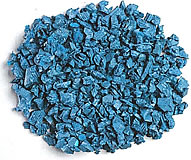|
Our company no longer sells rubber playground mulch. Instead, we recommend certified engineered wood fiber. |
|
Our company supplies and installs resilient surfacing for hundreds of playgrounds in the Maryland – Washington, DC – Virginia area, including safety wood chips, engineered wood fiber, rubber tiles, and Poured-in-Place liquid rubber. We’ve been in business since 1986. Recently, we discontinued distributing rubber mulch. There are several reasons:
The decision about what type of playground surfacing to use is, ultimately, the consumer’s choice. Whichever type of surfacing you choose, you can never go wrong by following the official playground safety guidelines. The U.S. Consumer Product Safety Commission’s (CPSC) Handbook for Public Playground Safety is a short, easy-to-read publication (click here). “Public playground” includes private commercial playgrounds in schools and daycares. Fifteen states have adopted the CPSC guidelines as law in whole or in part, so if your playground is located there, hop to it! (Click here for a list of the states.) In other states, you don’t have to follow these guidelines, but doing so will help to show that you have operated your play area using “reasonable care,” a common standard in negligence lawsuits. LINKS • U.S. Consumer Product Safety Commission (CPSC) André Henderson is Communications Director for Maryland Materials, a national seller and installer of playground equipment and parts. He is also a Certified Playground Safety Inspector (CPSI) and a licensed attorney in the District of Columbia. Note: The information provided in this article is not to be considered legal advice. For legal advice, please consult a licensed attorney in your jurisdiction. Maryland Materials will not be held liable for any actions taken in reliance upon this article. |
Call Us: 877-840-0707

 Rubber playground mulch is popular on commercial playgrounds, and it’s available in lots of fun colors. But is it safe?
Rubber playground mulch is popular on commercial playgrounds, and it’s available in lots of fun colors. But is it safe?